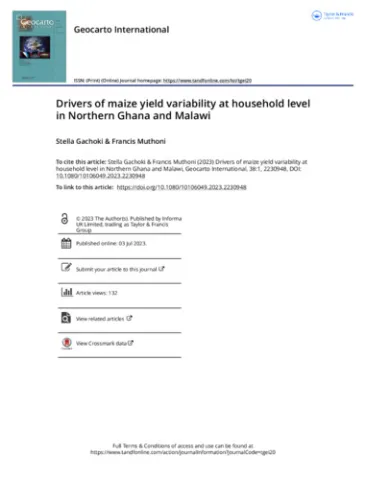Drivers of maize yield variability at household level in northern Ghana and Malawi

Abstract
Maize is a staple food, but productivity has stagnated due to limited access to advanced farming methods and knowledge. To promote sustainable agriculture, understanding the factors affecting maize yield at the farm level is crucial. This study used panel data on maize yield and agronomic practices in Northern Ghana and Malawi from 2014 to 2020. Satellite-based environmental variables were extracted at household locations, and Random Forest modeling was used to identify factors influencing maize yield variability. The models performance was sub-par with low R2 values (∼0.1 and ∼0.24 for Northern Ghana and Malawi). Fertilizer and precipitation were the most important factors explaining maize yield variability. Spatial maps showed that Malawi’s maize yield can increase with more fertilizer, but rainfall is essential. In Northern Ghana, relying solely on fertilizer may not be enough to boost maize production.
